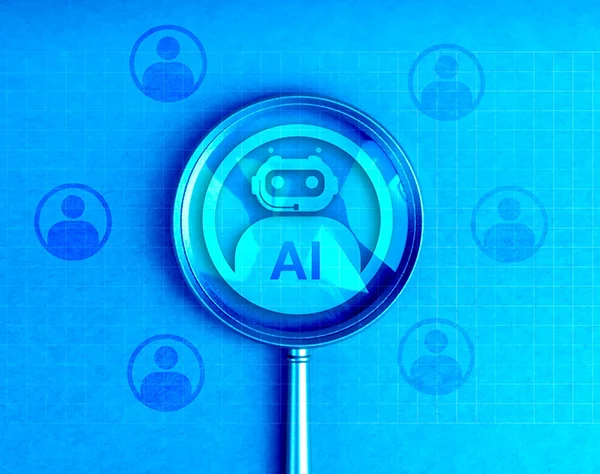In the era of digital transformation, recommendation systems have become a cornerstone of personalized user experiences. From suggesting products on e-commerce platforms to recommending movies on streaming services, AI-powered recommendation systems are revolutionizing how businesses engage with their audiences. As we enter 2025, building an effective AI recommendation system requires leveraging cutting-edge technologies, sophisticated algorithms, and robust datasets.
AI Recommendation Systems Explained
Recommendation systems are algorithms designed to provide personalized suggestions to users based on their preferences, behaviors, and interactions. These systems play a vital role in industries such as retail, entertainment, healthcare, and education by improving user engagement, driving sales, and enhancing customer satisfaction.
Types of AI Recommendation Systems
1. Collaborative Filtering
Relies on user-item interactions to predict user preferences.
Types:
User-based Collaborative Filtering
Item-based Collaborative Filtering
Example: Suggesting products based on other users with similar tastes.
2. Content-Based Filtering
Analyzes item features and user profiles to make recommendations.
Example: Recommending books with similar genres or authors.
3. Hybrid Recommendation Systems
Combines collaborative and content-based filtering for improved accuracy.
Example: Netflix uses a hybrid approach to suggest movies and TV shows.
4. Context-Aware Recommendation Systems
Factors in contextual data like time, location, or device to refine recommendations.
Example: Recommending nearby restaurants during lunch hours.
5. Deep Learning-Based Recommendation Systems
Utilizes neural networks to identify complex patterns in user behavior and preferences.
Example: Personalized playlists on music streaming platforms.
Key Components of an AI Recommendation System
Building an AI recommendation system requires a clear understanding of its core components. These elements work together to collect, process, and analyze data, ultimately delivering personalized recommendations. Let’s break down each of these key components in detail:
1. User Data
User data is the foundation of any recommendation system. It provides insight into who the users are and what they might want. This data typically includes:
Demographics: Basic details such as age, gender, location, and income level.
Preferences: Explicitly stated preferences, such as preferred genres, product categories, or topics of interest.
Behavioral Data: Information collected from user interactions, including browsing history, clicks, search queries, and purchase history.
By analyzing user data, the system can identify patterns and preferences, enabling it to provide more relevant recommendations.
2. Item Data
Item data refers to the descriptive information about the products, services, or content being recommended. This data includes:
Metadata: Attributes like product categories, brand, price, or specifications.
Features: Descriptive details that help differentiate one item from another, such as color, size, or material.
Reviews and Ratings: Feedback from other users that can be factored into recommendations to highlight highly-rated items.
Rich and well-structured item data allows the recommendation system to understand the properties of each item and how they align with user preferences.
3. Interaction Data
Interaction data captures the relationship between users and items. It provides a crucial layer of context to recommendations and includes:
Clicks: Information on which items users have clicked on.
Ratings: Numerical or star-based evaluations that reflect user satisfaction.
Purchases: Records of completed transactions that show which items users value the most.
Time Spent: Data on how long users interact with a specific item, indicating levels of interest.
This component forms the basis for collaborative filtering techniques, which rely on patterns in user-item interactions to make predictions.
4. Algorithms
Algorithms are the engines that process the data and generate recommendations. Different types of algorithms are used, depending on the use case and data availability:
Content-Based Filtering: Uses item metadata to recommend similar items based on a user’s previous interactions.
Collaborative Filtering: Identifies patterns in user behavior, such as similar user preferences or items often interacted with together.
Hybrid Models: Combines content-based and collaborative filtering for more accurate and diverse recommendations.
Deep Learning Models: Leverages neural networks to capture complex relationships and deliver highly personalized suggestions.
Choosing the right algorithm depends on the type of data available and the specific goals of the recommendation system.
5. Evaluation Metrics
To ensure the recommendation system performs effectively, it is critical to measure its success using well-defined metrics. These metrics evaluate how accurately the system meets user needs:
Precision: Represents the percentage of recommended items that are relevant to the user's interests.
Recall: Assesses the proportion of relevant items that are successfully recommended out of all possible relevant items.
F1 Score: A comprehensive metric that balances precision and recall to assess performance.
Mean Average Precision (MAP): Measures the overall quality of recommendation rankings.
Click-Through Rate (CTR): Indicates the percentage of users who interact with the recommended items.
Continuous monitoring of these metrics allows developers to refine and optimize the system for better results.
6. Scalability
As user bases grow and datasets become larger, scalability becomes a critical factor in the success of a recommendation system. Scalability ensures the system can handle:
Large User Bases: Accommodating millions of users without a drop in performance.
Big Data Volumes: Processing vast amounts of user interactions and item data efficiently.
Real-Time Recommendations: Delivering accurate recommendations in milliseconds, even under heavy load.
To achieve scalability, developers often employ distributed computing, efficient database management, and caching strategies.
Step-by-Step Guide to Building an AI Recommendation System in 2025
Step 1: Define the Objectives and Scope
Clearly outline what the recommendation system should achieve:
- Increase user engagement.
- Improve conversion rates.
- Enhance user retention.
Identify the scope, target audience, and business requirements.
Step 2: Collect and Process Data
Data is the backbone of any recommendation system. In 2025, data collection focuses on real-time streams and ethical practices.
Data Sources
- User interactions (clickstreams, ratings, reviews).
- Social media activity.
- Contextual data (geolocation, time).
Data Cleaning and Preprocessing
- Remove duplicates, outliers, and inconsistencies.
- Normalize data for uniformity.
- Adhere to data privacy regulations such as GDPR and CCPA.
Feature Engineering
Extract meaningful features, such as item popularity, user preferences, and temporal patterns.
Step 3: Choose the Right Algorithm
Select algorithms based on your system’s goals and data characteristics.
Collaborative Filtering
- Pros: Simple, effective for sparse data.
- Cons: Suffers from the cold-start problem (new users/items).
Content-Based Filtering
- Pros: Works well for new items.
- Cons: Limited to item features; lacks diversity.
Deep Learning Models
- Examples: Recurrent Neural Networks (RNNs), Convolutional Neural Networks (CNNs), and Transformer-based models.
- Pros: Captures complex patterns, suitable for diverse data.
Hybrid Models
- Combines multiple algorithms for higher accuracy and robustness.
Step 4: Build the Recommendation Engine
Develop the core recommendation engine using the selected algorithm(s).
Model Training
- Train models on historical data to identify patterns.
- Use frameworks like TensorFlow, PyTorch, or Scikit-learn for implementation.
Model Optimization
- Hyperparameter tuning to improve performance.
- Regularization techniques to avoid overfitting.
Integration with Cloud Services
- Utilize cloud platforms like AWS, Azure, or Google Cloud for scalability and storage.
Step 5: Incorporate Personalization
Enhance user experiences with personalized recommendations:
- Dynamic profiles that adapt to user behavior over time.
- Context-aware suggestions using real-time data.
Step 6: Test and Evaluate the System
Evaluate your recommendation system using:
Offline Testing
Use historical data to simulate user interactions.
Online Testing (A/B Testing)
Compare different recommendation approaches with live users.
Metrics to Monitor
- Precision: Accuracy of recommended items.
- Recall: Percentage of relevant items recommended.
- Mean Average Precision (MAP): Measures ranking quality.
Step 7: Deploy and Monitor
Deploy the system in production and continuously monitor its performance.
- Use monitoring tools to track response times, recommendation accuracy, and user feedback.
- Implement automated updates to incorporate new data.
Advanced Trends in AI Recommendation Systems for 2025
As we move forward, several trends are shaping the future of recommendation systems:
1. Transformer Models
Transformer architectures, like BERT and GPT, are being adapted for recommendation tasks. They excel in understanding user intent and generating personalized suggestions.
2. Federated Learning
Federated learning allows decentralized data processing, preserving user privacy while improving recommendation quality.
3. Explainable AI (XAI)
Users now demand transparency in AI decisions. Explainable AI enables users to understand why specific items were recommended.
4. Real-Time Recommendations
Real-time systems leverage edge computing and streaming data to provide instant suggestions.
5. Cross-Domain Recommendations
These systems recommend items across domains (e.g., books and movies) by understanding user preferences holistically.
Challenges in Building AI Recommendation Systems
Despite advancements, several challenges remain:
Cold-Start Problem
Addressed by hybrid systems and user profiling.
Data Sparsity
Solved using advanced deep learning techniques.
Scalability
Handled through cloud computing and distributed systems.
Privacy Concerns
Ensure compliance with regulations and implement federated learning for data security.
Benefits of AI Recommendation Systems in 2025
Businesses implementing AI recommendation systems enjoy significant benefits:
Increased Revenue: Personalized suggestions drive sales.
Enhanced User Experience: Users receive relevant and timely recommendations.
Higher Retention Rates: Engaging content keeps users coming back.
Operational Efficiency: Automation reduces manual workload.
Conclusion
Building an AI recommendation system in 2025 involves leveraging state-of-the-art technologies, ethical data practices, and innovative algorithms. These systems are not just tools; they are strategic assets that drive engagement, revenue, and customer loyalty.
By following the steps outlined in this guide, businesses can create powerful recommendation systems that stand out in an increasingly competitive digital landscape. The future of personalization is here, and AI is leading the way.









